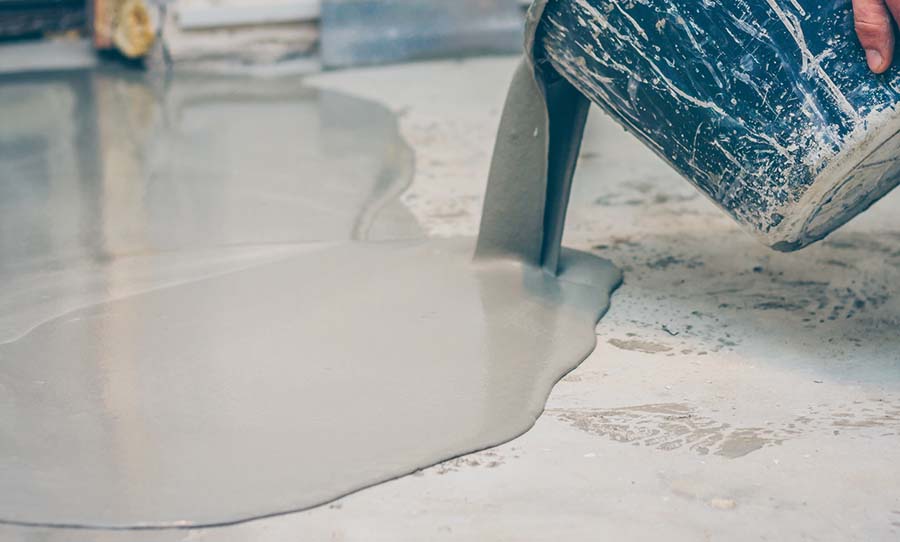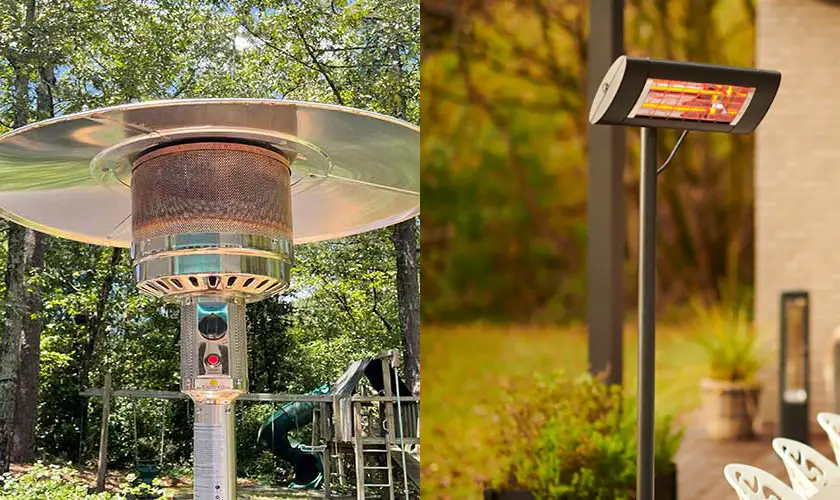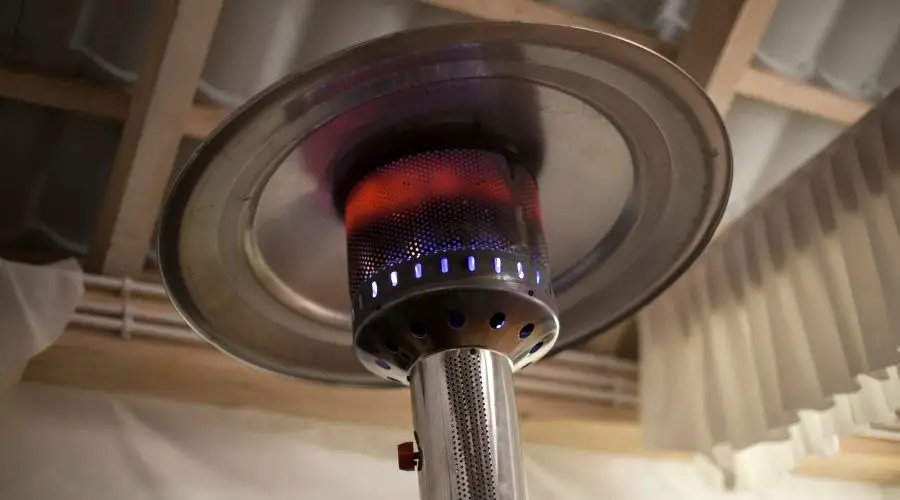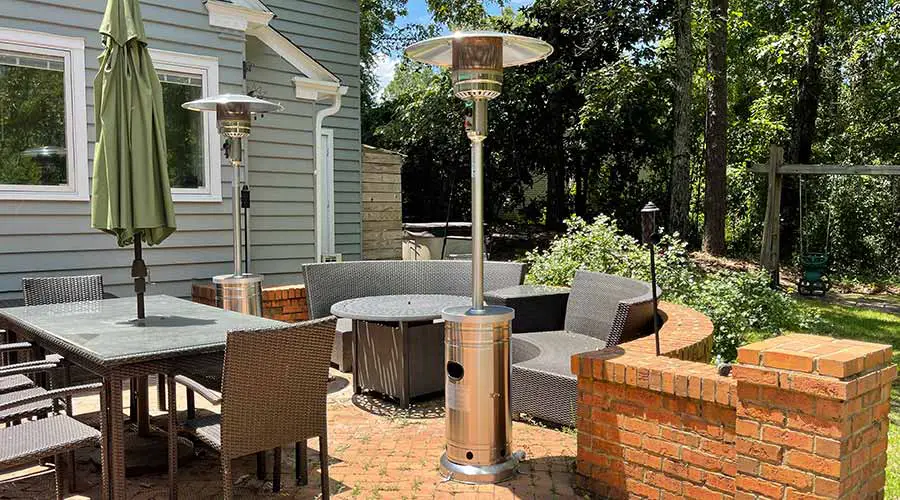
Nowadays, many homeowners have resorted to using concrete for laying their patio. However, concrete patios start to sink or crack as they get old due to settlement, erosion, tear, and wear like other concrete structures.
When such happens, you need to fix the uneven concrete patio, but the question is, how do you do it?
Level your concrete patio using slab jacking or polymer slab lifting techniques. Once everything is level, you can resurface or veneer the concrete to cover up any remaining cracks. Generally, fixing uneven, cracked concrete is pretty straightforward and does not require replacing the entire patio.
Here, we look at the various steps you can follow to fix any cracked, uneven concrete patio.
How Do You Fix a Cracked Uneven Concrete Patio?
Fixing a cracked, uneven concrete patio is a straightforward process. However, the replacement process may call for evaluating and assessing the situation and concrete repair solutions available at your disposal.
You should note there is no one-solutions-fits-all solution to fix the problem. Even though you can do everything by yourself, we recommend calling a professional for quality repairs. Below are different ways you can cover a cracked, uneven concrete patio:
1. Resurfacing the Top
One solution to the problem of covering a cracked, uneven concrete patio is resurfacing the top of your concrete patio. However, it’s a superficial solution and only serves to hide the actual problem.
The concrete cracks and furrows on your concrete patio may disappear for some time, but the problem of sinking and settling that has left empty spaces below the concrete patio still exist. Voids will lead the concrete slabs to rock from side to side, thus resulting in a potentially hazardous situation later.
2. Slab Jacking
Slab jacking, also called slap lifting or mud jacking is another standard solution that you can employ regardless of whether particular portions of the entire slab section have sunk.
However, it isn’t something that you implement as a DIY project. It is because it requires special equipment and expert knowledge to produce the best results. You should therefore approach a concrete specialist to help you out throughout the process.
During the slab jacking process, the concrete mixture is injected into holes and cracks. The mix of concrete is also injected below the surface of your slab to raise it.
The mortar mixture will fill the gaps and force uneven slabs to rise to the level of neighboring slabs, thus closing cracks and holes.
When the concrete mixture hardens, it prevents any rocking or movement. The benefit of using this way is that it’ll also fill gaps under the concrete slab where it hasn’t sunk.
However, since slab jacking uses mortar, it might be vulnerable to erosion.
3. Polymer Slab Lifting
Polymer slab lifting is among the newest advancement as far as concrete patio repair is concerned. This approach makes use of fewer follow-up issues and lighter materials compared to slab jacking.
Here, polyurethane, a polymer material, is pumped into holes and cracks of concrete patio slabs. The material is pumped below the surface of the concrete patio, where it fills the voids.
When polyurethane solidifies, it’ll expand quickly and lift your concrete surface to its intended level.
Polyurethane is lighter than the mortar mixture used in slab jacking. The cleanup process is also quick, and there are no muddy materials you require to wash away or clean with water.
After lifting the concrete slab, you will have to seal the cracks and add finishing touches to the leveled and freshly filled concrete patio surface.
However, polymer slab lifting can’t be used for concrete patios made from smaller stones or several pavers. This is because it isn’t possible to lift smaller stones uniformly.
4. Patching
Patching is the perfect solution, especially if you’re seeking to cover small cracked concrete portions of the patio. Here, you remove a part of the slab and pack sand below to support the slab.
The damaged section must be cut and removed with a crowbar. You can then fill in sand and pack it firmly using a tamping machine before putting the concrete slab.
If you ignore this, the slab will start to shift and cause concrete to sink. The gap around the area that you’ve cut should be filled to restrict water from entering.
5. Veneering
Veneering is also among the best approaches you can employ to repair cracked, uneven concrete patio. If some sections aren’t fully even when you employ sand, you can develop a new layer on concrete using mortar.
Here, you need to make the concrete’s surface area more textured and rougher using a chisel and hammer. If you plan to veneer a section cut out earlier, use the chisel around the edges to get a better finish.
Drill small holes on the concrete’s surface using a masonry bit. Mix mortar thinly after preparing your surface, pour it on the concrete slab’s surface, and level it carefully.
Please leave it to cure for about 30 minutes and finish the surface using a brush or trowel.
6. Extensive Veneering
If your entire surface is cracked, it would be an excellent idea to veneer the whole surface. To manage this, follow the guidelines below:
- First, remove all the loose concrete and debris and brush the area. You can then rinse the patio with water. If you want to get the best veneering outcome, your concrete surface should be as clean as possible.
- You must build a wooden frame around the edges of your concrete slab for it to protrude 2-3 inches above the present slab level.
- You can then place a layer of sand on your surface and ensure that all the depressions are covered. Proceed to tamp it down so that the concrete settles when poured.
- At this point, you should fill your wooden frame using fresh concrete and allow it to cure according to the manufacturer’s directions.
- Finish the concrete using a brush or a towel.
How Can You Make a Crack Concrete Patio Look Better?

Even though concrete patios are highly durable, they aren’t very exciting. If you have concrete in your backyard and want to make it look better, below are ways to makeover a concrete patio:
Paint a Pattern
Start by painting your concrete slab. Here, you can score your concrete slab using a circular saw to develop a diamond pattern.
Lay Decking Flooring
Are you aware that you can lay decking over your concrete slab? The procedure for doing so is very straightforward.
To do this, start by attaching white fascia boards on the sides. This is an excellent approach to making over your concrete patio since decking flooring can instantly warm up any outdoor space.
You can also add a deck on your concrete patio by creating a deck out of pallets. However, you should carry out proper maintenance on your deck. You should also learn how to refinish it properly.
Add Curves with Pavers
Even though a square concrete slab is standard, you can use pavers to add curves around the concrete patio. For instance, you can create a fire pit area by adding a half circle to one side. You can also border off a circular garden at a corner of your patio using pavers.
Lay Slate Tiles
Since concrete is already a great tile base, you can lay slate tiles to transform your concrete patio. First, you should look out for any weak spots and cracks and then repair them.
Proceed to tile a concrete patio the same way you would tile any other place in your home.
Stain Your Concrete To Appear Like Tiles
If you’re into tile appearance but you aren’t ready to go through the hassle of laying it, you can stain your concrete to have a tile appearance. Here, you can use ½-inch tape to develop grout lines over the floor and stain them.
You’ll have a patio that looks exactly like concrete.
Incorporate a Beautiful Outdoor Rug
You can makeover your patio by investing in a striking and large outdoor rug. To improve the area even further, you can put outdoor furniture over your rug.
Paint Concrete
Here, you can take a cracked concrete patio and then paint it to create a new and attractive living space. You can even add some attractive furniture to complete your makeover.
This is also a straightforward activity that you can complete by yourself.
Adding a Retaining Wall
Mix the ideas we have mentioned above with a beautiful retaining wall. It’s a great way of adding texture and forms a wonderful place for planting flowers.
There are also other additional design elements that you can implement to make your cracked patio look better and include:
- Outdoor string lights
- Outdoor sofas
- Outdoor dining sets
- Lounge chairs
- Pretty pergolas
- Hanging chairs
- Outdoor rocking chairs
- Fire pits
- Garden arbors
How Do You Keep Concrete From Cracking?
If you have just poured new concrete, follow the tips below to prevent it from cracking:
Base Preparation
The concrete slab can only be as effective as the base you’re pouring it on. If your base isn’t compact and sturdy, the slab will likely lack support and become soft. This will translate into cracks.
The solution here is to begin by preparing a firm foundation to set the concrete adequately and avoid creating a void after it has settled.
Using Enough Much Water
Water is a critical element of the concrete mix. However, adding too much water can worsen the consistency of your concrete.
There is perfect water to cement ratio that produces uniformity. If you use too much water, you’ll experience cracks as the concrete cures.
Reducing Wind Exposure
Exposing your fresh concrete to violent and fast winds will make it dry quickly. In such a case, you should block the winds using barriers. You can also apply spray-on anti-evaporation products to prevent the base from coming off quickly. This way, the surface won’t crack easily.
Proper Curing
Even though concrete takes about 20 days to cure, the few days (7 to 10 days) after pouring are crucial. For the concrete to acquire its strength, the binding agent should retain moisture.
If you allow the moisture to evaporate gradually, you won’t experience any early deterioration or cracks. You should spray it with water for the first few days.
The concrete will cure well once the mix gets old and won’t be affected by either extreme pressure or temperature.
Reinforcement
Although concrete is firm by itself, you should improve its intensity even more. Do this by incorporating steel reinforcement before you pour the concrete mixture.
The procedure is straightforward, and you can do it yourself. However, a professional could produce quality work.
Add Control Joints
Control joints are necessary, especially for preventing slabs from being affected by the shrinkage and movement of solid below them.
Remember, if you have cracks on your concrete surface, you can easily fix them. However, “prevention is better than cure.”
Types of Concrete Cracks
There are at least five types of concrete cracks that you should be aware of. Let’s go through them below:
Plastic Shrinkage Cracks
Concrete is full of water before hardening (plastic state). When the water escapes from the slabs, large voids are left behind.
The empty spaces are responsible for the weakening of concrete, thus translating to cracks. Even though these cracks can happen anywhere, they are common at reentrant corners and in the middle of a slab.
Plastic shrinkages are narrow and hardly visible. To prevent this type of crack, you can incorporate control joints.
Expansion Concrete Cracks
It’s common knowledge that heat leads to expansion in concrete. When concrete expands, it will push against anything standing in its way. Enough expansion force can cause the concrete to crack.
Here, you can employ expansion joints to correct the issue. Expansion joints are made from compressible materials such as rubber, lumber, and asphalt.
Heaving Concrete Cracks
When your ground freezes, it can lift several inches before settling back to its former position. The movement caused by thawing and freezing cycles contributes greatly to concrete cracking.
Roots from large trees could also present the same effect on your slab.
Settling Concrete Cracks
The settling of the ground below the concrete slab can also translate into cracking. Settling cracks result from situations where there is a void in the ground below your concrete surface.
Cracks Resulting from Slab Overload
Even though concrete presents a very strong building and construction material, there are limits to it. If you place an excessive weight over the concrete slab, you might experience cracks.
Sometimes, concrete is classified in terms of strength. For instance, a strength of 3000, 4000, or 5000+ PSI refers to the pounds per square inch it’ll require to crush a concrete slab.
The solution to this type of crack is to stop overloading your concrete slab.
Can You Pour New Concrete Over Old Cracked Concrete?

You can always pour new concrete over your old cracked concrete. However, the frost heaves and cracks on your old concrete can move to your new concrete. Additionally, you should pour at least 2-inch thick of the new concrete for effective results.
There are specific instances where we recommend that you pour new concrete over an old one and include:
- On the driveway or basketball court
- On the pathway to your house or stepping stones
However, there are certain instances where we wouldn’t recommend you to pour new concrete over an old one and include:
- In situations where tree roots are on the way
- If there is a staircase or door on the way
- If the concrete isn’t level or there are substantial cracks
Cons of Pouring New Concrete Over Old Concrete
Maintenance
Laying new over old concrete is likely to eliminate the low maintenance that concrete is known for. For instance, it’ll introduce frost heaves into the equation. Frost heaves result from the combination of the defrosting soil below and freezing temperature.
Short Lifespan
Concrete has been reputable for lasting many years. In fact, in some instances, you’ll never experience challenges with the concrete. However, pouring new over old concrete can introduce challenges that could limit the lifespan of the concrete.
Raising the Level
You should understand the surroundings well before you pour new concrete over an existing one. For instance, you should be aware of the staircases and doors.
You might raise the level in the door scenario, preventing the door from closing or opening easily.
Bonding
First, new concrete won’t bond naturally to existing concrete. You will therefore need a bonding agent to hold the two together.
You should also separate the two layers using sand, plastic, or stones for longevity and flexibility.
Conclusion
A cracked and uneven concrete patio results from various causes. However, you should evaluate and assess the situation to determine the best approach to use when you notice the problem.
You can employ any recommended methods above, including veneering, polymer slab lifting, slab, jacking, and extensive veneering.
However, regardless of the approach, you select to fix a cracked, uneven concrete patio, you should fix the problem immediately to avoid expensive replacements and repairs in the future.
Most of the solutions are straightforward, and you can do it yourself. However, you should involve a professional if you feel like you lack enough skills.







